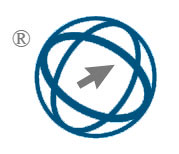Study on Using Reinforcement Learning for the Monotone Boolean Reconstruction
Abstract
Full Text:
PDFReferences
L. Aslanyan, The discrete isoperimetry problem and related extremal problems for discrete spaces, Problemy kibernetiki, 36:85–128 (1979).
L. Aslanyan and H. Sahakyan. The splitting technique in monotone recognition. Discrete Applied Mathematics, 216:502–512, 2017.
L. Aslanyan, H. Sahakyan, V. Romanov, G. Da Costa, and R. Kacimi. Large network target coverage protocols. In 2019 Computer Science and Information Technologies (CSIT), pages 57–64. IEEE, 2019.
Mohammad Azad, Igor Chikalov, Shahid Hussain, Mikhail Moshkov, and Beata Zielosko, Decision Trees with Hypotheses for Recognition of Monotone Boolean Functions and for Sorting, arXiv 2203.08894v1 [cs.CC]. Book series “Synthesis Lectures on Intelligent Technologies”.
R. Bellman, A Markovian decision process. Indiana Univ. Math. J., 6:679–684, 1957. ISSN 0022-2518.
A. Blum. Learning a function of r relevant variables (open problem). In Proceedings of the 16th Annual Conference on Learning Theory and 7th Kernel Workshop, pages 731-733, 2003.
E. Boros, P. L. Hammer, T. Ibaraki and K. Kawakami, Identifying 2-monotonic positive Boolean functions in polynomial time, ISA’91, Algorithms, edited by W. L. Hsu and R. C. T. Lee, Springer Lecture Notes in Computer Science, 557 (1991) 104-115.
Bshouty, Nader H., and Christino Tamon, On the Fourier spectrum of monotone functions. Journal of the ACM (JACM)43, no. 4 (1996): 747-770.
R. Dedekind, Über Zerlegungen von Zahlen durch ihre größten gemeinsamen Teiler, Festschrift Hoch. Braunschweig u. ges. Werke, II (1897), 103-148.
Peter Frankl and Gyula OH Katona. On strengthenings of the intersecting shadow theorem. Journal of Combinatorial Theory, Series A, 184:105510, 2021.
D. N. Gainanov, On one criterion of the optimality of an algorithm for evaluating monotonic Boolean functions, Computational Mathematics and Mathematical Physics, 24 (1984), 176–181.
Mihály Gara, Tamás Sámuel Tasi, and Péter Balázs, Machine Learning as a Preprocessing Phase in Discrete Tomography, Lecture Notes in Computer Science book series (LNIP, volume 7346).
Katona, Gyula, A theorem of finite sets. in: Theory of Graphs. Academic Press - Akadémiai Kiadó, New York; Budapest, (1968), pp. 187-207.
Katona, Gyula, A theorem of finite sets. In Classic Papers in Combinatorics, (2009) pages 381–401. Springer.
G. Hansel. Sur le nombre des fonctions booléennes monotones de n variables. C. R. Acad. Sci., 262:1088–1090, 1966.
Hu Y., Yao Y., Lee W., A reinforcement learning approach for optimizing multiple traveling salesman problems over graphs. Knowl-Based Syst 204:106244, (2020).
Jackson, Jeffrey C., Homin K. Lee, Rocco A. Servedio, and Andrew Wan, Learning random monotone DNF. In Approximation, Randomization and Combinatorial Optimization. Algorithms and Techniques: 11th International Workshop, APPROX 2008, and 12th International Workshop, RANDOM 2008, Boston, MA, USA, August 25-27, 2008. Proceedings, pp. 483-497. Springer Berlin Heidelberg, 2008.
E. B. Khalil, H. Dai, Y. Zhang, B. Dilkina, L. Song. Learning combinatorial optimization algorithms over graphs. Advances in Neural Information Processing Systems, 30:6351–6361, 2017.
V. K. Korobkov, “On monotone functions of the algebra of logic”, Problemy kibernetiki, 13:5–28 (1965).
D. Korshunov, “On the number of monotone boolean functions”, Problemy kibernetiki, 38:5–109, 1981.
J. Kruskal. The number of simplices in a complex. Mathematical Optimization Techniques, University of California Press, 251–278, 1963.
Zhuwen Li, Qifeng Chen, and Vladlen Koltun. Combinatorial optimization with graph convolutional networks and guided tree search. Advances in neural information processing systems, 31, 2018.
Mazyavkina N., Sviridov S., Ivanov S., and Burnaev E. Reinforcement learning for combinatorial optimization: A survey. Computers and Operations Research, 134, 2021.
S. Muroga, Threshold Logic and Its Applications, Wiley-Interscience, 1971.
O’Donnell, Ryan, and R. Servedio, Learning monotone functions from random examples in polynomial time, Citeseer, 2005.
André L. C. Ottoni, Erivelton G. Nepomuceno, Marcos S. de Oliveira, Daniela C. R. de Oliveira, Reinforcement learning for the traveling salesman problem with Refueling, Complex & Intelligent Systems (2022) 8:2001–2015 https://doi.org/10.1007/s40747-021-00444-4.
N. A. Sokolov, On optimal deciphering of monotone functions of logic algebra, Journal of Computational Mathematics and Math. Physics, 22(12):1878–1887, 1982.
N. A. Sokolov, Optimal reconstruction of monotone Boolean functions, USSR Computational Mathematics and Mathematical Physics, 27(6):181–187, 1987.
Schröder, Bernd SW. Ordered sets. Springer 29 (2003): 30.
Richard S. Sutton and Andrew G. Barto. Reinforcement learning. The MIT Press, London, 2nd edition, 2018.
G. P. Tonoyan, Chain partitioning of n-cube vertices and deciphering of monotone Boolean functions, Computational Mathematics and Mathematical Physics, 19(6) (1979).
L. Valiant (1984) A theory of the learnable. Communications of the ACM, 27(11):1134{1142.
O. Vinyals, M. Fortunato, N. Jaitly. Pointer networks. NeurIPS, pages 2692–2700, 2015.
H. Sahakyan, L. Aslanyan and V. Ryazanov, “On the Hypercube Subset Partitioning Varieties” 2019
Computer Science and Information Technologies (CSIT), Yerevan, Armenia, 2019, pp. 83-88, doi:
1109/CSITechnol.2019.8895211.
Dohmen, K. Improved Bonferroni Inequalities with Applications: Inequalities and Identities of Inclusion-Exclusion Type. Berlin: Springer-Verlag, 2003. Galambos, J. and Simonelli, I. Bonferroni-Type Inequalities with Applications. New York: Springer-Verlag, 1996.
J. Galambos, J. and I. Simonelli, “Bonferroni-TypeInequalities with Applications”. New York: Springer-Verlag, 1996.
DOI: https://doi.org/10.31449/inf.v48i4.4804

This work is licensed under a Creative Commons Attribution 3.0 License.









